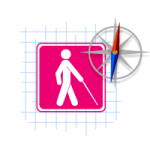Invisible Wounds: Emerging Promising Practices for Meeting Planners
Specific approaches to make your event more accessible to those with invisible wounds:
-
Disclose the use of strobe lights, surround sound and/or large format/high definition video, fireworks, or other unusually loud elements in advance through registration materials, attendee packets, programs, online meeting descriptions, registrant confirmation emails, and other communications.
-
Seated venues for concerts or presentations, which provide a measure of visual and spatial organization, are more accessible than "standing room only" gatherings.
-
In a concert or large presentation hall, hold seats along the sides of the room close to exits for individuals who may experience challenges with crowds. Advertise the availability of these seats and make sure event staff know about them.
-
In meeting rooms, allow individuals to self-select their seats rather than using assigned seating. Some individuals will prefer back-row seats with a wall behind them to being seated in the front or middle of the room; others will prefer seats where exits are in line of sight.
-
Make "quiet rooms" available at your event, especially concerts, large conferences, or receptions. Mark these "time out" spaces with signage and on maps in attendees’ packets, and be sure that event staff are available to help participants find them.
-
Service animals are addressed by the ADA and are increasingly used by those with invisible wounds and other disabilities.
-
Ask in the registration process if a service animal will be accompanying a participant, and increase the number of accessible seating locations accordingly, since individuals using service animals often need more space (similar to people using wheelchairs or other mobility devices).
-
Prepare and educate your event staff about service animals. Many organizations, such as Canine Companions for Independence, offer etiquette tips for interacting with service animals.
-
Point out in your materials any places that can be used as “relief areas” for service animals (hotels and conference center maps are increasingly including easily-accessed grassy areas).
-


User Comments/Questions
Add Comment/Question